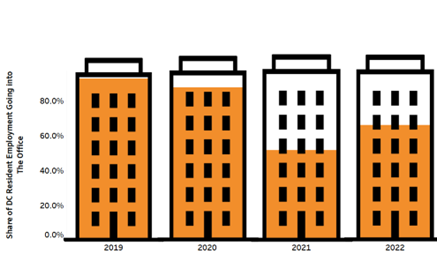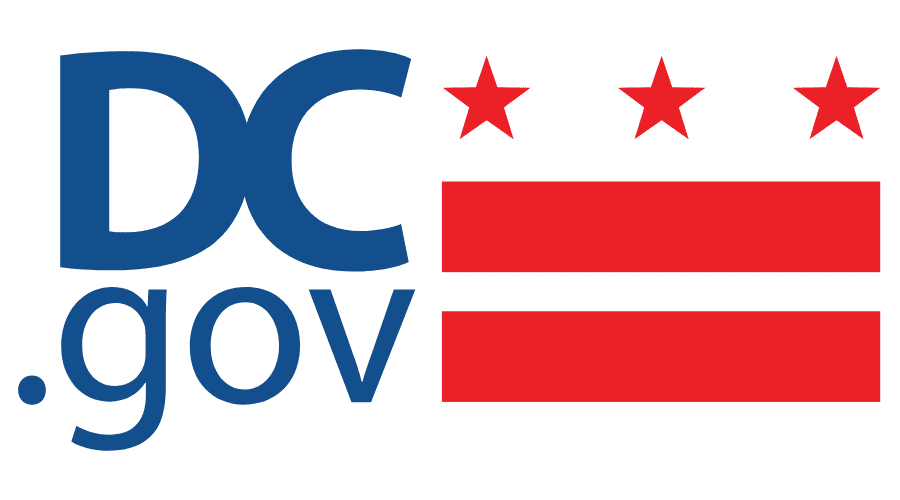
In the evening hours of October 8, 1871, a fire erupted in Chicago. This event would later become known as the Great Chicago Fire.
Over 17,000 buildings would be destroyed, with more than 90,000 Chicago residents displaced as a result and hundreds of people dead.[1] This part of history is always remembered and taught in schools. However, what transpired after the fire is less talked about or discussed. The fire mainly impacted the business district of Chicago at the time, leaving the rails, stockyards, and wharfs primarily untouched. The "Great Rebuilding" was an effort to restore Chicago by building a new downtown, and the lessons learned from the fire required all new buildings to be built with fire-resistant materials.
George Santayana famously said, "Those who cannot remember the past are condemned to repeat it." As we recover from the pandemic, we can draw lessons from Chicago’s “Great Rebuilding.” In the aftermath of the Chicago fire, the business district was devastated, prompting the need for innovative thinking. Similarly, as we emerge from COVID-19, it's evident that the old ways of doing business may not be suitable for the future. In particular, many researchers have noted that remote work, which was accelerated by the pandemic, represents a natural evolution in how work is conducted.
In this post, we look at telework rates and job growth across sectors and contemplate how telework has reshaped the District economy. We also explore strategies used by other cities to adapt to evolving economic landscapes.
Work from Home in the New Economic Landscape
According to the 2019 ACS 1-year estimates, 92.6% of DC residents reported commuting to an office for work. As shown in Figure 1, the share of residents commuting has recovered to about two-thirds of pre-COVID levels since reaching a low in 2021.
Figure 1: DC Residents Reporting their Commute as “Commuting to Work”, 2019-2022
|
Source: US Census, ACS 1-Year Estimates 2019-2022 |
Before the 2010s, most remote work was done during the employee's personal time. After 2016, a Gallup poll showed that more employees transitioned to remote work as part of their normal workweek, with at least one day per week working remotely. As of 2023, 63% of employees reported some form of working remotely as part of their work hours. [2] However, not all remote work is equal, and the availability usually depends on your occupation.
The Bureau of Labor Statistics' Occupational Requirements Survey (ORS) reports various occupation characteristics. One of the survey sections looks at the availability of remote work (classified as telework) by occupation. The ORS 2023 survey reported that only 11.4% of respondents had access to remote work.[3] As shown in Figure 2, the availability of remote work varied by occupation, but it was often more available in occupations with less customer face-to-face interaction daily, such as web developers and lawyers.
Figure 2: Ability to Telework by Occupation in the US, 2023
|
Source: BLS, Occupational Requirements Survey, 2023 |
What is the link between access to remote work and economic recovery? As the Office of Revenue Analysis reported recently, the BLS just finished their annual benchmarking of employment data, and for January, there was a reported difference in the jobs growth for the District. Notably, key sectors with high rates of telework such as professional and business services and information are reporting a lower recovery rate than previously anticipated. Figure 3 looks at the changes from pre- and post-March benchmarking.
Figure 3: Jobs in the District, March Revised v. Previous - Key Sectors, Jan 2020 – Jan 2024
|
Source: Bureau of Labor Statistics via ALFRED |
In Figure 3 the notable changes for positive job growth occurred within the Healthcare and Social Assistance and Transportation, Warehousing, and Utilities sectors. These sectors have lower rates of telework, as shown in Figure 2, which aligns with them having more direct interaction with consumers to complete tasks.
Where Does DC's “Great Rebuilding” Go from Here?
“Work from Home” arrangements appear to be here indefinitely, and for those sectors often relied upon to buoy DC's economy, this might be the new normal. However, there is hope in industries such as education, healthcare, trade and transportation, leisure, and hospitality for continued growth in the future. To grow in this new normal may require new and agile approaches to economic development. Prior incentives may have less impact than previously as the landscape has changed, but with some pivoting, they may become the backbone for new economic strategies. Some cities started shifting years ago as their older industries began to wane. Many of their new approaches have become case studies for cities seeking a path in the new post-pandemic economic environment.
For example, Calgary asked itself years ago an important question: “whether it possesses the right mix of industries to performing at a high enough level to allow for new levels of prosperity.” [4] Facing structural issues such as an aging population, the city, and Canada realized that to continue economically growing, it would need to look at a diverse portfolio of industries and methods for fostering its growth. In response, new approaches included the creation of an opportunity fund and wrap-around programs designed to train and retain workers and residents. The programs looked at incentives that would align with supporting the retention and creation of jobs and businesses through a “what do they need to succeed” approach.
The support for the inclusion of wrap-around programs in economic development strategies was cited most recently in the U.S. Economic Development Administration's fact sheet in 2021 on American Rescue Plan Program funding strategies.[5] In a section related to worker development, the fact sheet recognized the need to create not just business incentivization but also worker development through support programs such as childcare and transportation. Any new development strategies may need to consider the workers and businesses as co-existing units that require support to build and retain residency.
Concluding Thoughts
The Great Rebuilding took several years and multiple phases before it was completed in 1879. Even successful plans like Calgary took many years before the impacts were fully apparent, and at times, shifts were made in the original plan. As the District transitions from the pandemic to a new economic reality, any new economic development strategy will require a willingness to adapt and evolve as circumstances change. The new plans will require flexibility and innovation, experimenting with new approaches, retaining successful methods, and discarding ineffective ones. This doesn't mean that the old programs aren't useful. In fact, these prior strategies could be the cornerstones by which new pathways are formed. However, looking forward is often harder in the face of all that is unknown, from revenues to population growth and business retention. In building a new economic strategy, being innovative, agile, and patient while considering the past will be the hallmarks of navigating the course of future economic development.
What is this data?
The data included in this post are from the Bureau of Labor Statistics datasets: American Community Survey, 1-year estimates for the District of Columbia for 2019-2022, Occupational Requirements Survey for 2023, and employment statistics retrieved from the Federal Reserve Bank of St. Louis ALFRED® system.
The Occupational Requirements Survey (ORS) is survey data collected on the following for occupations in the United States: education, training, and experience; cognitive and mental requirements; physical demands; and environmental conditions.
[1] Muro, Mark; Joseph Parilla; Gregory Spencer; Dieter Kogler; and David Rigby. “Canada’s Advanced Industries: A Path to Prosperity”. Brookings Institute Report and Martin Prosperity Institute, June 2018. Canada's Advanced Industries: A Path to Prosperity (brookings.edu)
[2] US Economic Development Administration. “Fact Sheet: Investing in America’s Communities - The Economic Development Administration’s American Rescue Plan Programs”. 2021. Fact Sheet: Investing in America’s Communities - The Economic Development Administration’s American Rescue Plan Programs | U.S. Economic Development Administration (eda.gov)
[3] Jones, Jeffrey. “Remote Work Stable at Higher Rate Post-Pandemic” Gallup Report, September 2023. Remote Work Stable at Higher Rate Post-Pandemic (gallup.com)
[4] BLS Occupational Requirements Survey, 2023. https://www.bls.gov/ors/
[5] National Geographic, “The Chicago Fire of 1871 and the ‘Great Rebuilding,’” https://education.nationalgeographic.org/resource/chicago-fire-1871-and-great-rebuilding/

